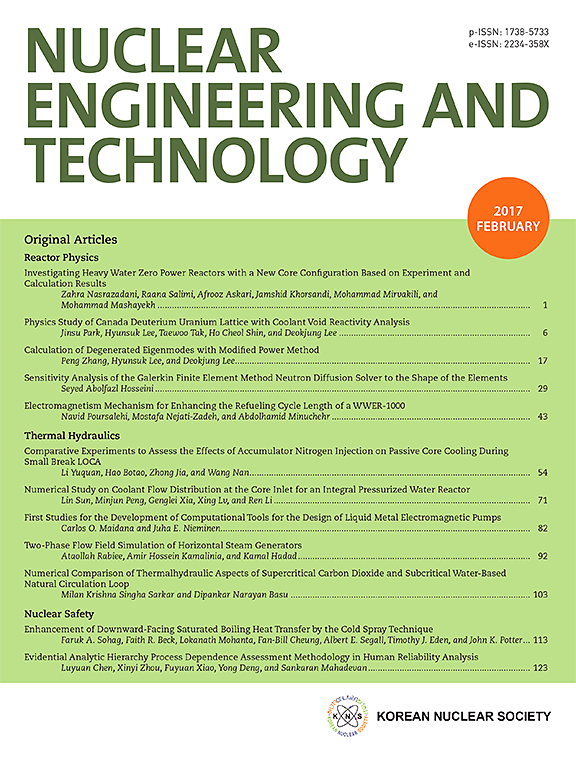Comparative analysis of machine learning-based dose assessment algorithms for TL dosimetry
IF 2.6
3区 工程技术
Q1 NUCLEAR SCIENCE & TECHNOLOGY
引用次数: 0
Abstract
This paper explores the implementation of machine learning-based algorithms for TL dose assessment. It focuses on the radiation field classification, performance quotient evaluation, and shallow and deep dose equivalent assessment of ANN and LGBM, in comparison to the traditional method of DT. We evaluate these algorithms based on the element response data measured by TLD. A data set was built for training, and the base element responses of test categories were amplified, and normalized to 1 mSv Cs-137 within the range of ±3 %. Both algorithms consist of five subset models for classifying radiation fields and identifying ratios of mixed fields. The LGBM showed the best accuracy in classifying considered radiation fields and the lowest performance quotients. By comparing the tolerance levels of deep dose and shallow dose equivalents among the three algorithms, the LGBM yields the smallest difference between the predicted and true dose equivalents. This smaller difference implies the LGBM offers the least bias and standard deviation in the expected value, giving higher accuracy and precision in dose assessment over the traditional DT method. The findings from this study further contribute to the adoption of ML-based algorithms for TL dose assessment, underscoring its importance in the field.
基于机器学习的热辐射剂量测定剂量评估算法比较分析
本文探讨了基于机器学习的 TL 剂量评估算法的实施。与传统的 DT 方法相比,本文侧重于 ANN 和 LGBM 的辐射场分类、性能商评估以及浅层和深层剂量当量评估。我们根据 TLD 测量的元素响应数据对这些算法进行了评估。我们建立了一个用于训练的数据集,对测试类别的基本元素响应进行了放大,并在 ±3 % 的范围内归一化为 1 mSv Cs-137。两种算法都由五个子集模型组成,用于对辐射场进行分类和识别混合场的比率。LGBM 在对所考虑的辐射场进行分类时表现出最佳的准确性和最低的性能商数。通过比较三种算法中深剂量和浅剂量当量的容差水平,LGBM 得出的预测剂量当量与真实剂量当量之间的差异最小。这种较小的差异意味着 LGBM 的预期值偏差和标准偏差最小,与传统的 DT 方法相比,其剂量评估的准确性和精确度更高。这项研究的结果进一步推动了基于 ML 算法的 TL 剂量评估的采用,凸显了其在该领域的重要性。
本文章由计算机程序翻译,如有差异,请以英文原文为准。
求助全文
约1分钟内获得全文
求助全文
来源期刊

Nuclear Engineering and Technology
工程技术-核科学技术
CiteScore
4.80
自引率
7.40%
发文量
431
审稿时长
3.5 months
期刊介绍:
Nuclear Engineering and Technology (NET), an international journal of the Korean Nuclear Society (KNS), publishes peer-reviewed papers on original research, ideas and developments in all areas of the field of nuclear science and technology. NET bimonthly publishes original articles, reviews, and technical notes. The journal is listed in the Science Citation Index Expanded (SCIE) of Thomson Reuters.
NET covers all fields for peaceful utilization of nuclear energy and radiation as follows:
1) Reactor Physics
2) Thermal Hydraulics
3) Nuclear Safety
4) Nuclear I&C
5) Nuclear Physics, Fusion, and Laser Technology
6) Nuclear Fuel Cycle and Radioactive Waste Management
7) Nuclear Fuel and Reactor Materials
8) Radiation Application
9) Radiation Protection
10) Nuclear Structural Analysis and Plant Management & Maintenance
11) Nuclear Policy, Economics, and Human Resource Development
 求助内容:
求助内容: 应助结果提醒方式:
应助结果提醒方式:


